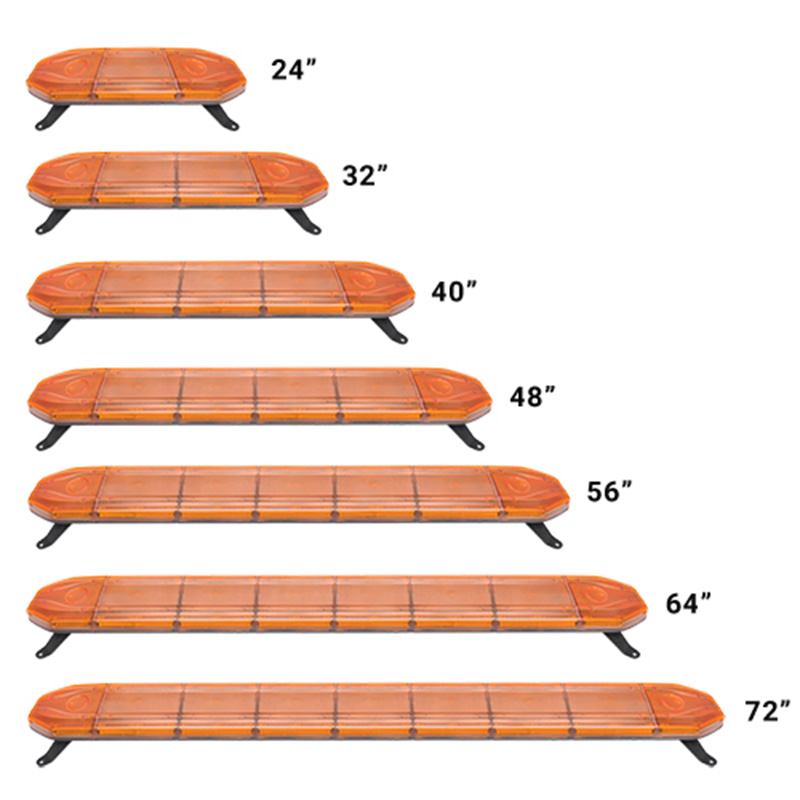Warning Lightbars
Warning lightbars, commonly known as light bars or emergency lightbars, are specialized lighting systems used on various types of emergency and service vehicles to provide visual warnings and enhance visibility. These lightbars consist of multiple LED modules, strobe lights, or other lighting elemen......
Send Inquiry
Product Description
Warning lightbars, commonly known as light bars or emergency lightbars, are specialized lighting systems used on various types of emergency and service vehicles to provide visual warnings and enhance visibility. These lightbars consist of multiple LED modules, strobe lights, or other lighting elements that can flash, rotate, or display different patterns, alerting other drivers and pedestrians to the presence of an emergency or service vehicle.
Key Features and Considerations for Warning Lightbars:
1. LED Technology: Most modern warning lightbars use energy-efficient and bright LED technology, which provides excellent visibility even in daylight and adverse weather conditions.
2. Multiple Modules: Lightbars feature multiple lighting modules arranged in specific patterns to maximize visibility from different angles.
3. Patterns: Warning lightbars can display a variety of patterns, such as alternating flashing, rotating, and various strobe patterns. Some lightbars also have the capability to display directional patterns, such as arrows, to guide traffic.
4. Colors: Lightbars can be equipped with various colors, including red, blue, amber, white, and green. The colors used are often regulated by local laws and indicate the type of emergency or service vehicle.
5. Control Options: Lightbars come with control switches or control panels that allow users to select different flashing patterns, colors, and intensity levels.
6. Mounting: Lightbars can be mounted on the roof, front, or rear of emergency and service vehicles. Some models also have interior or grille-mounted options.
7. Power Source: These lightbars are powered by the vehicle's electrical system, and certain models may require specific wiring and power management.
8. Weather Resistance: Warning lightbars are designed to withstand various weather conditions, as they are often used in outdoor and demanding environments.
Common Uses:
- Law Enforcement: Police vehicles use lightbars to signal emergencies, pursue suspects, and manage traffic during special events.
- Emergency Medical Services (EMS): Ambulances use lightbars to alert other drivers and pedestrians to the presence of a medical emergency.
- Fire Department: Fire trucks use lightbars to signal their response to fires, accidents, and other emergencies.
- Tow Trucks: Tow trucks use lightbars to indicate that they are assisting a stranded or disabled vehicle.
- Utility and Construction Vehicles: Service vehicles and construction vehicles use lightbars to enhance visibility when working on roadways.
Installation and Use:
- Follow local laws and regulations regarding the use of emergency lights on vehicles.
- Mount the lightbar securely according to manufacturer's instructions, ensuring it does not obstruct the driver's view.
- Connect the lightbar to the vehicle's electrical system and follow proper wiring guidelines.
- Use the control panel or switches to select the appropriate flashing pattern and color for the situation.
Warning lightbars play a vital role in ensuring the safety of emergency responders, service personnel, and the public. They provide clear visual warnings that help prevent accidents and guide traffic during emergency situations. It's important to use warning lightbars responsibly and adhere to legal and safety guidelines.










